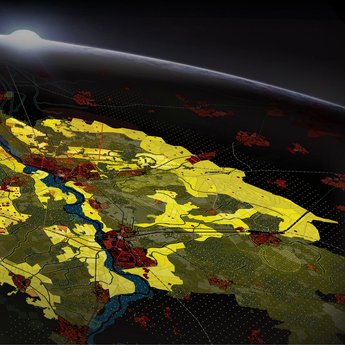Motive
Outlook studies play an important part in the developed planning method. The most commonly used term for these is ‘scenarios’. A drawback, however, is that scenarios remain rather abstract and lack specificity from a spatial perspective. Therefore, they provide little guidance for designers. The sub-study ‘outlook studies’ is focussed on optimising scenario methods.













